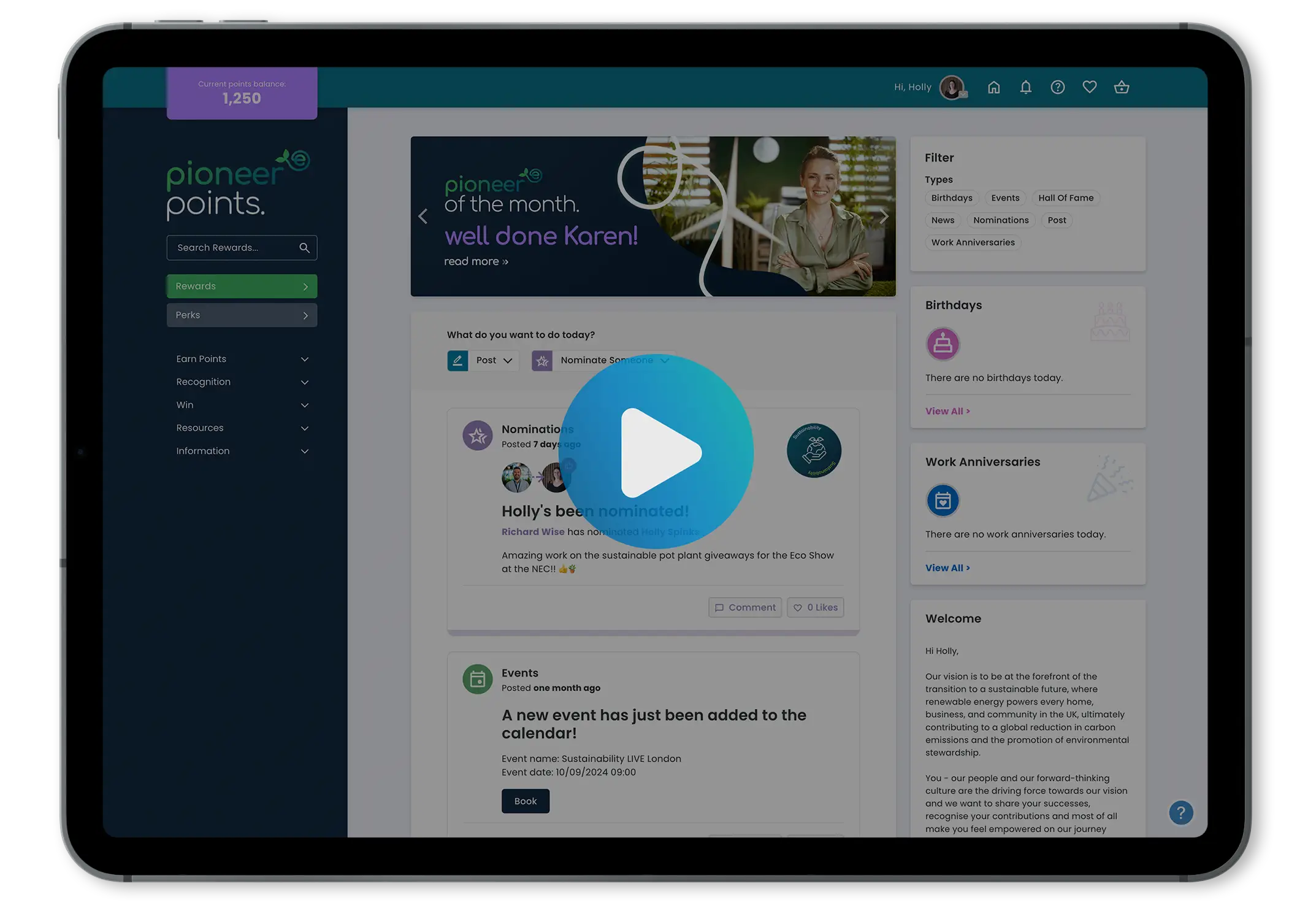


There’s more to improving performance at work than clearing a cluttered desk or taking less phone calls. You need to have a genuine drive for personal improvement, be able to prioritise each task effectively, and have clarity about your goals to keep you motivated.
We all want a motivated and engaged workforce. You can hardly hope to satisfy customers – let alone leave a lasting, positive mark on them – if their experience is flat enough to fit between two Post-Its.
Some of our motives are biological where we are motivated to seek food and water but our behaviour is also influenced by personal needs like social approval, acceptance, achievement & motivation to drive forwards.
Think of your salesforce. Some of us just are natural performers on the sales floor, but even those with a true flair for getting signatures on the dotted line can lose the wind in their sales, run up against walls, stagnate, lose momentum, and find themselves looking for that all-important oomph.
This is why many directors look to sales incentives – big or small. But do they make a difference, and what do the very best incentive programmes look like? Here’s what we’ve found.
The Advantages of Sales Incentives
The most obvious advantage to sales incentives is that they motivate sales teams. Motivation fuels competition and sparks social connection which in turn is likely to bring about an increase in business revenues. This increase in earnings can be self-supporting and be part of the solution in compensating sales employees for their performance.
As employees work harder to earn tempting rewards, they become hooked; and in turn more loyal to the organisation. By devising an incentive structure that rewards frequently and in a timely manner, the repeat behaviours continue over a longer sustained period. This loyalty is beneficial to your company, to your customers who can enjoy great service and to long-term business relationships with your sales reps, demonstrating that your reps are loyal to your products and services.

It is evidenced that a positive customer experience is dependent on a positive and enriching employee experience. Recognition and rewards drive performance, and offer you one of the best ways to establish and cultivate your company’s values.
In contrast, demotivated and disengaged employees are a real problem for businesses. They can lead to a high staff turnover rate – and the high cost of replacement, which is estimated to cost around 6-9 months’ salary, and risk spiralling churn – but, long before that, they can lead to stagnated or dwindling profit.
A great sales incentive programme will provide support when you look to further grow your sales team – to help entice and provide a differential. Whilst it’s fair to say some people would rather be paid a flat rate than take part in an incentive programme, you have to ask what drives their performance to achieve those stretched objectives. Money is soon swallowed up into the norm of living expenses, therefore unmemorable. Motivated salespeople want to grow and achieve, so using incentive programmes which highlight top performers but look to encourage new starters, most improved etc. provide attractive benefits giving you an edge when attracting new people.
The right way to incentivise sales
Consistency and Clarity
As with rewarding customer loyalty, rewarding employee performance must follow a clear and consistent structure in order to prove valuable. If rewards are given seemingly ad hoc, with no real framework to the when’s, how’s, and why’s, then it won’t be long before interest starts to dwindle, and frustrations start to show.
Points Over Cash
Cash is an easy, obvious choice for rewarding, but it says very little and is easily spent and forgotten again. By contrast, points need to be accumulated over time. Because they exist in a closed loop – unlike cash, which can be spent anywhere – your employees won’t be able to spend it on something trivial and forgettable. They can aspire to a particular reward, and take more overall from the experience of being recognised and rewarded.

Relevant Rewards
This is key. Accumulating points as rewards is not interesting or engaging if the rewards aren’t worth waiting for – instead, the use of points will feel like an economical alternative to traditional, cash-based rewards. From gifts to experiences, the catalogue should provide a strong variety of rewards to redeem after enough time (and hard work) has passed.
Backed By Feedback
Feedback is the backbone of worthwhile improvement, and actioning that feedback is a vital way of demonstrating your receptiveness and ongoing desire to improve. It’s something many businesses aspire to demonstrate to customers, and your workforce should be no different.
A strong platform
A good user experience is key here. If it’s too difficult to navigate and employees struggle to even find their points cache – let alone the rewards catalogue – then they are unlikely to stick with it. Nobody wants to go to their boss to check in on how many points they’ve got.
This is precisely what we offer at Incentivesmart. Our extensive experience in motivating B2B sales with scalable, engaging solutions is helping businesses to thrive in sales-driven environments, where incentives can make all the difference – provided they’re handled the right way.



![How to inspire your sales team (and smash target!) {{ include_custom_fonts({"Poppins":["Semi Bold"]}) }}](https://no-cache.hubspot.com/cta/default/5921162/interactive-187541229676.png)





